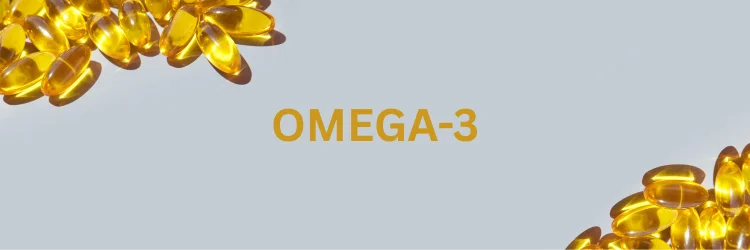- 39 New London Turnpike Suite 120 Glastonbury, CT 06033

Effect of Omega-3 Polyunsaturated Fatty Acids Supplementation for Patients with Osteoarthritis: A Meta-analysis
Journal of Orthopaedic Surgery and Research
May 24, 2023; Vol. 18; No. 1; Article 381
Deng W, Zhiqian Yi, Enzhi Yin, Rui Lu, Hongbo You, Xuefeng Yuan: This study cites 35 references.
These authors performed a systematic review and meta-analysis to comprehensively evaluate the influence of n-3 PUFAs on symptom and joint function of patients with osteoarthritis (OA).
Nine randomized clinical trials (RCTs) with 2,070 patients with OA contributed to the meta-analysis. The follow-up durations were 1 to 63 months.
KEY POINTS FROM THIS ARTICLE:
1) “Worldwide, osteoarthritis (OA) is the most common degenerative joint disease affecting cartilage and surrounding tissues, which has become a leading cause of disability worldwide, particularly of the older population.”
2) “With a growing elderly and obese population, the incidence of OA in recent decades has been increasing, and this has also resulted in a substantial economic burden for the global populations.”
3) Due to the adverse events associated with the long-term use of OA drugs, patients have been seeking alternative and complementary agents for relieving the symptoms and improving the function of the affected arthritis.
4) “Omega-3 polyunsaturated fatty acids (n-3 PUFAs) confers anti-inflammatory efficacy.”
5) “Omega-3 polyunsaturated fatty acids (n-3 PUFAs), mainly including eicosapentaenoic acid (EPA) and docosahexanoic acid (DHA), have been suggested to be effective for patients with OA because of their efficacy for attenuating the systemic inflammatory response and the catabolic environment that accelerates cartilage degradation.”
6) Findings:
7) Conclusions:
8) This study has these methodological strengths:
9) The mechanisms underlying the benefits of n-3 PUFA include:
10) “The optimal dose, components (ratio of EPA to DHA), and treatment duration of n-3 PUFA supplementation for OA remains to be determined.”
11) “To sum up, results of the meta-analysis indicate that supplementation of n-3 PUFAs is effective to relieve pain and improve joint function in patients with OA, without increasing the risk of treatment related AEs.”
COMMENTS FROM DAN MURPHY:
We have reviewed these Articles that also support the use of omega-3s for OA:
Article Review 09-08:
A Meta-analysis of the Analgesic Effects of Omega-3 Polyunsaturated Fatty Acid Supplementation for Inflammatory Joint Pain
Article Review 15-08:
Fish Oil: What the Prescriber Needs to Know
Article Review 35-11:
Effect of Glucosamine Sulfate with or without Omega-3 Fatty Acids in Patients with Osteoarthritis
Article Review 11-13:
Omega-3 Fatty Acids and Synovitis in Osteoarthritic Knees
Article Review 21-06:
Omega-3 Fatty Acids (Fish Oil) as an Anti-inflammatory: An Alternative to Nonsteroidal Anti-inflammatory Drugs for Discogenic Pain
Several of these studies suggest the optimal dose of omega-3s is 3,000 mg/day: EPA 2,000 + DHA 1,000.

39 New London Turnpike Suite 120
Glastonbury, CT 06033
